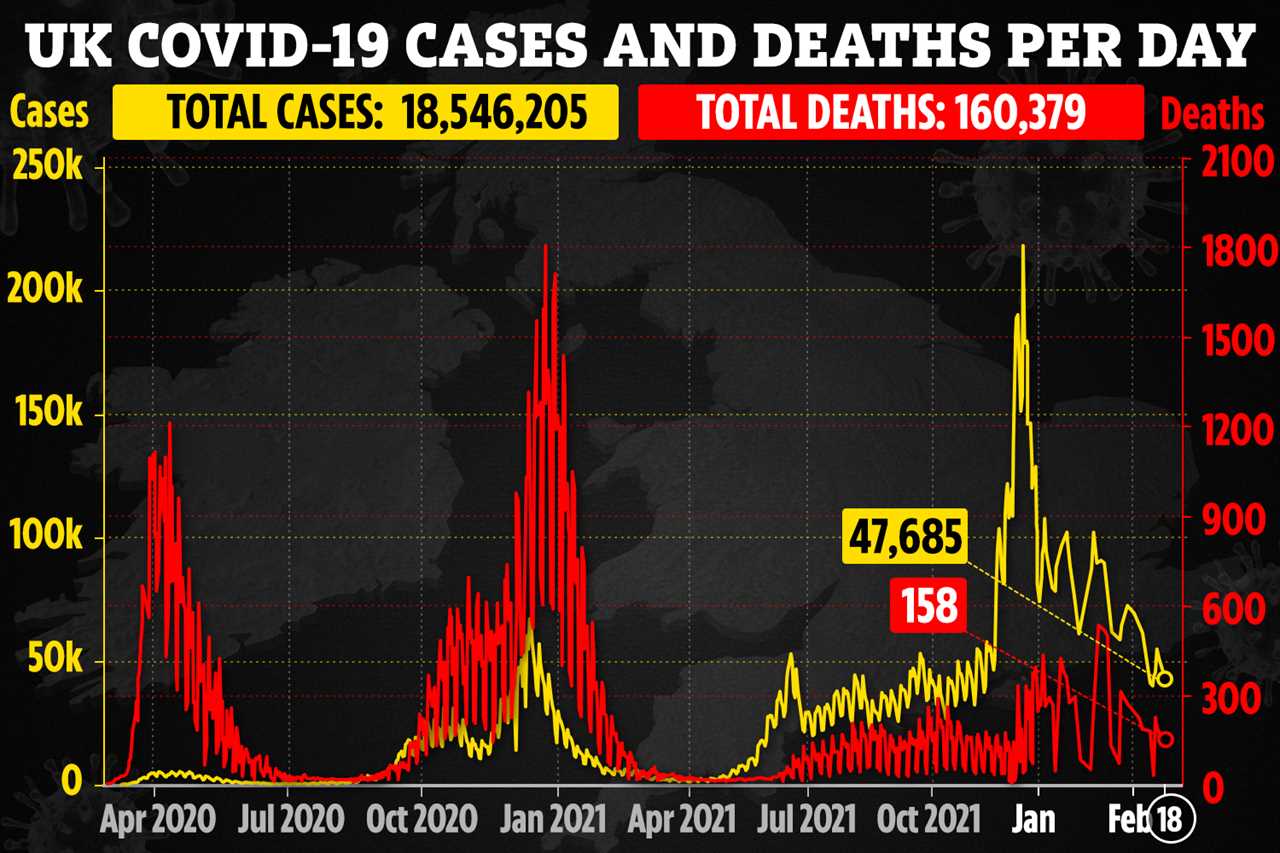DAILY coronavirus infections have fallen by 49 per cent in the last month, as the crucial R rate remains stable between 0.8 and 1.0.
A further 47,685 people tested positive for the bug today, that’s down from 94,432 infections seen on January 18, official data has revealed.


Infections are also down 19 per cent on this time last week, when 58,899 people tested positive.
Sadly a further 158 people have lost their lives within 28 days of a positive Covid test, that’s down on 193 people this time last week and 438 people on January 18.
It brings the total deaths to have been caused by Covid in the UK to 160,379 with 18,546,205 having caught the bug.
The R rate has remained stable this week and an R value between 0.8 and 1.0 means that, on average, every 10 people infected will infect between 8 and 10 other people.
The growth rate is currently between -4 per cent and -1 per cent which means that the number of new infections could be shrinking by up to 4 per cent every day.
Omicron BA.1 is the dominant strain in the UK, but its sister strain is now also spreading.
It is known as BA.2, and has many of the same mutations as original Omicron – with current case rates still low in comparison.
A string of positive studies show Omicron is milder than other strains in the vaccinated – with vaccines thought to still be effective against this new variant, BA.2.
The latest data from UKHSA found it appears to be able to spread faster than original Omicron.
Data from the experts at University of East Anglia has shown how the cases are spreading across the UK.
Professor Tim Spector, head of the ZOE Symptom Tracker app, said that in the South West, the percentage of cases is above 50 per cent.
“In the North East it’s about 20 per cent, so a pretty big difference depending on where you live, mainly South to North and that is likely to change.
“We are still finding out about BA.2 and what we do know is that its doubling time sees around every seven or eight days and its infecting a third of the population at the moment,
“We believe its advantage is because it has a shorter incubation period. A subtle difference in that can make a big difference in how infectious it is in sweeping through households”.






